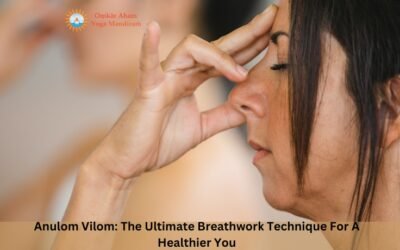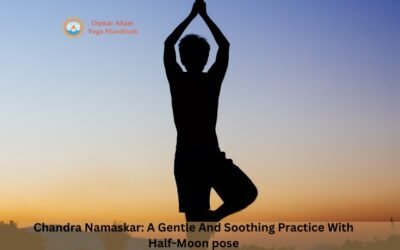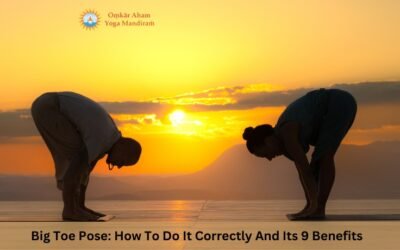The 7 chakras are the body’s primary energy centres. You’ve undoubtedly heard anyone complain about “unblocking” their chakra system, which refers to the concept that energy can flow freely if all of our chakras are accessible. There is harmony between the physical body, mind, and soul. In Sanskrit, chakra means “wheel,” and you can visualize them as free-flowing wheels of positive energy.
7 Chakras In The Body
We’ll cover how to determine when any of your seven primary chakras are out of balance. Additionally, we will review the unique features, elements, and colours associated with each chakra, from root to crown. You can also learn it in many meditation classes.
Muladhara
Muladhara, or root chakra, is symbolic of our foundation. It is found at the bottom of the vertebra of the human body and provides us with a sense of stability. Once the root chakra is open, we have faith in our capacity to overcome obstacles and arise on our own two feet. When it is obstructed, we have a sense of threat, as if we are standing on dangerous ground.
Properties of Muladhara Chakra
- Location: At the base of the spine, near the tailbone.
- What it regulates: Issues of survival, such as financial freedom, money, and food.
- Mantra: “I cannot grow from an unstable base,”.
- Chakra’s colour: Red
- Earth element.
- Hematite mineral.
- Yoga position for chakra – Warrior I.
- It develops at the ages of 1-7 years
Swadhisthana
The Swadhisthana, or sacral chakra, contributes to our understanding of our own and others’ emotions. Additionally, it regulates innovation and sexual vitality. Individuals who have obstructed energy centres may experience a loss of control over the situation.
- Location: Lower abdomen, about 2 inches below the navel
- What it controls: Your perception of wealth, well-being, pleasure, and sexuality
- Mantra: “I always honour others but not before myself.”
- Chakra’s colour: Orange
- Element: Water
- Stone for Chakra: Tiger’s Eye
- Yoga pose: Bound Angle Pose
- It develops at the age of 8-14 years old
Manipura
The solar plexus chakra, the third chakra, is associated with your tendency to be strong and in charge of your life. Consider the very last moment you had fluttering or a hole in your stomach: This is the Manipura chakra at operation. If the solar plexus chakra is out of balance, you may experience extreme feelings of humiliation and self-doubt. Individuals with unblocked sacral chakras are liberated to reveal their selves.
- Location: Upper abdomen in the stomach area
- What it controls: Self-worth, self-confidence, and self-esteem
- Mantra: “Self-love starts when I accept all parts of myself.”
- Chakra’s colour: Yellow
- Element: Fire
- Stone: Amber
- Yoga pose: Boat Pose
- It develops at the age of 15-21 years old.
Anahata
The Anahata, or heart chakra, serves as a link between the lower chakras (related to the matter) and the upper chakras (connected with spirituality) (associated with spirituality). As the name implies, this chakra can affect our capacity for sending and receiving love—both from everyone and ourselves. Those who have a blocked heart chakra will struggle to connect with the people in their life ultimately. When a person’s heart is accessible, they are capable of experiencing profound sympathy and care.
- Location: Center of the chest, just above the heart
- What it controls: Love, joy, and inner peace
- Mantra: “When I love myself, loving others comes easily.”
- Chakra’s color: Green
- Element: Air
- Stone: Rose Quartz
- Yoga pose: Camel Pose
- It develops at the age of 21-28 years old
Vishuddha
The Vishuddha, or throat chakra, communicates the heart chakra’s message and is responsible for our potential to spread our power. When it is operating well, it enables us to convey ourselves authentically and openly. Somebody who has a blocked throat chakra will experience problems locating the words to express their true feelings.
- Location: Throat
- What it controls: Communication, self-expression, and truth
- Mantra: “I speak my truth, always.”
- Chakra’s color: Light Blue/Turquoise
- Element: Sound/Music
- Stone: Aquamarine
- Yoga pose: Fish Pose
- It develops at the age of 29-35 years old
Ajna
As we rise the body, we draw closer to divine communion. The Anja, or third-eye chakra, is in charge of our capacity for vision and intuition. Consider it the soul’s eye that captures data that is invisible on the surface. For someone with an open third-eye chakra, sights and intuitive hits are not unusual.
- Location: Throat
- What it controls: Communication, self-expression, and truth
- Mantra: “I speak my truth, always.”
- Chakra’s color: Light Blue/Turquoise
- Element: Sound/Music
- Stone: Aquamarine
- Yoga pose: Fish Pose
- It develops at the age of 29-35 years old
Sahasrara
The Sahasrara, or crown chakra, is the topmost chakra. It is located at the top of the skull and signifies our spiritual connection. You get access to superior intelligence whenever the crown chakra is fully expanded, only a few humans ever do!—you get access to superior intelligence.
- Location: The very top of the head
- What it controls: Inner and outer beauty, spiritual connection
- Lesson: “I am a vessel for love and light.”
- Chakra’s color: Violet/White
- Element: Divine Consciousness
- Stone: Clear Quartz
- Yoga pose: Headstand
- It develops at the age of 43-49 years old
Conclusion
In conclusion, understanding the main 7 chakras is an essential aspect of any yoga practitioner’s journey towards holistic well-being. By incorporating knowledge of these energy centres into their practice, students of both 100-hour yoga teacher training courses and 300-hour yoga teacher training courses can gain a deeper understanding of how yoga and meditation can balance their chakras and enhance their overall physical, emotional, and spiritual health. By studying the chakras and learning how to bring them into balance, yoga teachers can also better guide their students on their own paths to wellness.
For further details contact us at:
Call/WhatsApp: +91-9997744876
Mail us at: info@yogateachertrainingschool.com




















